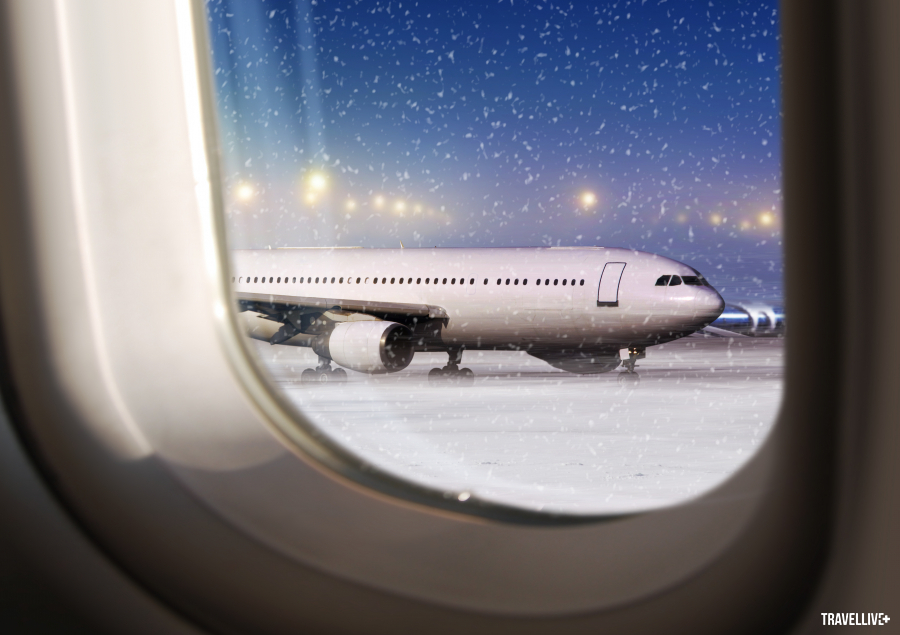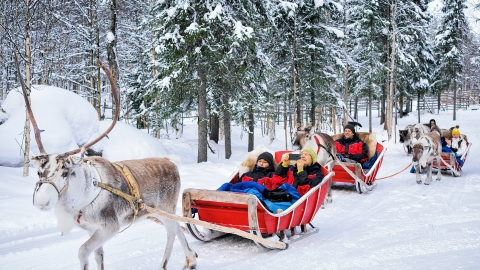1. Prepare full outfit
Many people think that to keep warm, you need to wear many layers of clothing. This is completely untrue. Wearing many layers of clothing will not make you feel warmer, but it will definitely make it more difficult to walk and move because the thick layers of clothing can make it difficult for you to move normally.
In European countries, especially Northern Europe, children have been taught from a young age how to dress scientifically in winter, and this formula includes only three layers of clothing: an inner thermal shirt, usually made of merino wool or thin pure wool to ensure the body's warmth is retained, good moisture absorption and ventilation. This thermal layer is very important, because if the wrong fabric is chosen, it cannot absorb sweat, the wearer will easily catch a cold if he sweats.

The second layer is usually a pullover, turtleneck, thick sweatshirt, etc., which protects and is worn over the first layer. Northern Europeans often prefer thick wool sweaters because this material is very warm, soft and comfortable. Especially with 100% real wool (usually very expensive), the wool itself can clean itself from dirt, sweat, and body odor, so you can comfortably wear the shirt for many days without any hygiene problems.
The outer layer is a winter jacket, preferably one that is both waterproof (from rain and melted snow) and windproof, especially if you are planning to travel to natural locations or to a place known for its high winds, such as Iceland. A good winter jacket is usually made of foam to insulate the body and has a hood with (faux) fur to help keep snow off your face.
For pants, you should choose tights made of fleece or with a higher DEN (denier) index, the warmer they are. If you intend to hunt for the Northern Lights, visit Santa Claus in Lapland, ride a reindeer or dog sled, or participate in outdoor activities for a long time, you should choose tights of about 200 DEN to ensure good heat retention.
One rule of winter clothing for people in cold countries is to limit wearing tight clothes. This principle was observed and learned by the world-famous Norwegian explorer Roald Amundsen from the Eskimos. During the preparation and conduct of the expedition from Europe around the Arctic to North America, he had the opportunity to live and interact with the native Eskimos. When observing that they often wore loose coats made of seal fur or fur, Roald Amundsen learned that the layer of air between the layers of fabric acts as an excellent insulation layer. That is also the reason why Northern Europeans often like to wear wide-legged pants in the winter.
2. Prepare… mentally for flights
Severe weather is one of the reasons why winter flights often encounter problems such as flight delays due to bad weather, flight delays due to staff having to do technical work on the plane (pumping de-icing fluid onto the wings and fuselage before take-off, which can take up to an hour if the weather is too cold), or even flight cancellations if the bad weather persists. Another reason why traveling by plane during this time becomes more difficult is because of the sudden increase in demand.

In Europe, starting from around December 20, the flow of people to airports and major train stations increases, and the closer it gets to Christmas, the more crowded it becomes because everyone wants to reunite with their families as soon as possible. This overload will peak on the day before Christmas, and begin to cool down immediately from December 24, then increase again when the flow of people who had been rushing back to their hometowns before, now have to rush back to the city to continue making a living.
So, to avoid any hassle when traveling during Christmas, there are two things you need to keep in mind: you should go to the airport very early, about 3-4 hours before departure time to check-in and check your luggage; and be mentally prepared to… wait for the flight! A good book, some snacks or light food, a fully charged phone for entertainment or to contact if necessary and a strong spirit to wait.

Additionally, to save time, you can also check-in online in advance (if possible); bring only carry-on luggage; or weigh your luggage yourself, label it, and put it on the conveyor belt if you have checked luggage.
3. Allocate time and sightseeing spots reasonably
Winter in the Northern Hemisphere is characterized by very short days, the time the sun appears and shines during the day is only a few hours, and there are even days when the sun does not appear at all. As I type these lines to readers, Norway is experiencing a literally dark November, with four weeks without seeing the sun. The sky is still bright, but the sun is hidden by thick gray clouds. But on rainy days, the situation is even darker. Especially, the closer to the Arctic Circle, the shorter the days are and there is almost no sun.
To optimize daylight hours and work productivity, on the last Sunday of October every year, Europe switches to winter time. Winter time will be delayed by one hour, helping people to make the most of daylight hours to work more effectively.
When traveling during this time, to make the most of the daylight to see the scenery, visit and take pictures, you should try to get up early. It will start to get dark around 4 pm, and the closer to the winter solstice, the faster it gets dark. In addition, you should also take advantage of the opportunity to book tickets online in advance at famous attractions and remember to check the opening hours and activities at the attractions you want to visit, as these places often change more or less in winter.

It is also important to have backup plans in place during your trip. It is possible that your trip to the suburbs will be cancelled or disrupted due to bad weather, buses or even trains not being able to get there; or simply it will be too cold for you to go out and stay outside for too long. In such cases, having an alternative plan in place to avoid “dead time” is very important.
The simplest way is to visit indoor places like museums, galleries, or spend a little money on shopping malls that are having crazy sales for Christmas and New Year, go to a bookstore, visit a cafe and let yourself be immersed in the cozy atmosphere of a strange place. Cafes in Europe are often decorated very beautifully during Christmas, as beautiful as the pictures in eye-catching magazines. Free wifi is available everywhere, which is even more convenient if you want to sit here and work all day.

There is a Norwegian proverb that says: “There is no such thing as bad weather, only unsuitable clothing.” Applying this to travel, I would probably say: “There is no such thing as bad weather, only unsuitable travel schedules!” And of course, it has to be accompanied by the right clothes and accessories, too.

































